evil empire
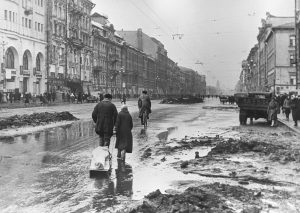 When an evil empire, such as Hitler’s regime in Nazi Germany, decides to rule the world, they begin to take over neighboring nations…by any means possible. If the nation is too weak to fight, it is easy, but if the nation can fight it becomes much harder to succeed. Nevertheless, they always seem to find a way, if they are determined enough. And Hitler was nothing, if not determined. The Nazis invaded the Soviet Union in late September, and surrounded Leningrad soon after. The months that followed, found the people of the city trying to establish supply lines from the Soviet interior and attempting to evacuate its citizens. It was a tough process and they often found themselves using a hazardous “ice and water road” across Lake Ladoga. A successful land corridor was finally created in January 1943, and the Red Army finally managed to drive off the Germans the following year. Nevertheless, all that took time, and in the end, the siege lasted nearly 900 days and resulted in the deaths of more than 1 million Soviet civilians.
When an evil empire, such as Hitler’s regime in Nazi Germany, decides to rule the world, they begin to take over neighboring nations…by any means possible. If the nation is too weak to fight, it is easy, but if the nation can fight it becomes much harder to succeed. Nevertheless, they always seem to find a way, if they are determined enough. And Hitler was nothing, if not determined. The Nazis invaded the Soviet Union in late September, and surrounded Leningrad soon after. The months that followed, found the people of the city trying to establish supply lines from the Soviet interior and attempting to evacuate its citizens. It was a tough process and they often found themselves using a hazardous “ice and water road” across Lake Ladoga. A successful land corridor was finally created in January 1943, and the Red Army finally managed to drive off the Germans the following year. Nevertheless, all that took time, and in the end, the siege lasted nearly 900 days and resulted in the deaths of more than 1 million Soviet civilians.
The German and Finnish forces besieged Lenin’s namesake city after their spectacular initial advance during Operation Barbarossa in the summer of 1941. Nevertheless, it was not going to be an easy task to bring the Soviet people into submission. A German Army Group struggled against stubborn Soviet resistance to isolate and seize the city before the onset of winter. The fighting was heaviest during August. German forces reached the city’s suburbs and the shores of Lake Ladoga, severing Soviet ground communications with the city. In 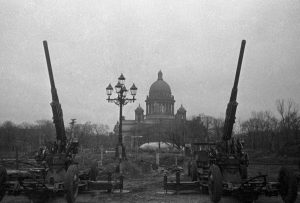 November 1941, Soviet forces repelled a renewed German offensive and clung to tenuous resupply routes across the frozen waters of Lake Ladoga. After that, German and Soviet strategic attention shifted to other more critical sectors of the Eastern Front, and Leningrad…its defending forces and its large civilian population…endured an 880 day siege of unparalleled severity and hardship. I simply can’t imagine the cruelty of a regime that would let a million people starve to death to obtain power. Despite desperate Soviet use of an “ice and water road” across Lake Ladoga to resupply its three million encircled soldiers and civilians and to evacuate one million civilians, over one million civilians perished during that bitter siege. Another 300,000 Soviet soldiers died defending the city or attempting to end the siege. In January 1943, Soviet forces opened a narrow land corridor into the city through which vital rations and supplies again flowed. But it was not until January 1944, that the Red Army successes in other front sectors enable the Soviets to end the siege. By this time, the besieging German forces were so weak that renewed Soviet attacks drove them away from the city and from Soviet soil. Determination simply wasn’t enough to win that victory for Hitler.
November 1941, Soviet forces repelled a renewed German offensive and clung to tenuous resupply routes across the frozen waters of Lake Ladoga. After that, German and Soviet strategic attention shifted to other more critical sectors of the Eastern Front, and Leningrad…its defending forces and its large civilian population…endured an 880 day siege of unparalleled severity and hardship. I simply can’t imagine the cruelty of a regime that would let a million people starve to death to obtain power. Despite desperate Soviet use of an “ice and water road” across Lake Ladoga to resupply its three million encircled soldiers and civilians and to evacuate one million civilians, over one million civilians perished during that bitter siege. Another 300,000 Soviet soldiers died defending the city or attempting to end the siege. In January 1943, Soviet forces opened a narrow land corridor into the city through which vital rations and supplies again flowed. But it was not until January 1944, that the Red Army successes in other front sectors enable the Soviets to end the siege. By this time, the besieging German forces were so weak that renewed Soviet attacks drove them away from the city and from Soviet soil. Determination simply wasn’t enough to win that victory for Hitler.
After November 1941, possession of Leningrad held only symbolic significance. In holding the “ice and water road” the Soviets were able to bring in enough supplies to stave of the ongoing starvation, so the siege has a 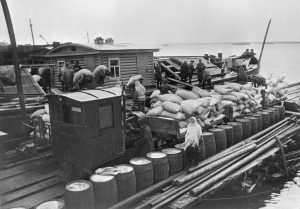 little less effect. The Germans maintained their siege with a single army, and defending Soviet forces numbered less than 15 percent of their total strength on the German-Soviet front. The Leningrad sector was clearly of secondary importance, and the Soviets raised the siege only after the fate of German arms had been decided in more critical front sectors. Despite its diminished strategic significance, the suffering and sacrifices of Leningrad’s dwindling population and defending forces inspired the Soviet war effort as a whole. No nation can lose that many people and not feel its impact. The siege ended on January 27, 1944, but I don’t think the people felt that it was such a big victory, considering the loss of life.
little less effect. The Germans maintained their siege with a single army, and defending Soviet forces numbered less than 15 percent of their total strength on the German-Soviet front. The Leningrad sector was clearly of secondary importance, and the Soviets raised the siege only after the fate of German arms had been decided in more critical front sectors. Despite its diminished strategic significance, the suffering and sacrifices of Leningrad’s dwindling population and defending forces inspired the Soviet war effort as a whole. No nation can lose that many people and not feel its impact. The siege ended on January 27, 1944, but I don’t think the people felt that it was such a big victory, considering the loss of life.
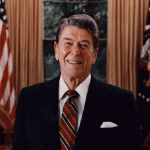 After the March 5, 1946, speech by former British Prime Minister Winston Spencer Churchill, condemning the Soviet Union’s policies in Europe, in which he declared, “From Stettin in the Baltic to Trieste in the Adriatic, an iron curtain has descended across the continent.” It was basically the opening remark that defined the Cold War years, and everyone knew that Russia could not be trusted. I suppose that they were similar to the North Koreans today. The Cold War would continue for the next 45 years. It was a source of concern for a number of United States Presidents over the years, as well as the American people. President Ronald Reagan was one of those presidents.
After the March 5, 1946, speech by former British Prime Minister Winston Spencer Churchill, condemning the Soviet Union’s policies in Europe, in which he declared, “From Stettin in the Baltic to Trieste in the Adriatic, an iron curtain has descended across the continent.” It was basically the opening remark that defined the Cold War years, and everyone knew that Russia could not be trusted. I suppose that they were similar to the North Koreans today. The Cold War would continue for the next 45 years. It was a source of concern for a number of United States Presidents over the years, as well as the American people. President Ronald Reagan was one of those presidents.
On March 8, 1983, while speaking at a convention of the National Association of Evangelicals in Florida, President Ronald Reagan publicly referred to the Soviet Union as an evil empire. It was the second time in his career that President Reagan had made this reference. He had first used the phrase in a 1982 speech at the British House of Commons. Some considered Reagan’s use of the Star Wars film-inspired terminology to be brilliant democratic rhetoric, but then in my opinion there was little about President Reagan that wasn’t brilliant. Of course, there were those within the international diplomatic community who denounced it as irresponsible bombast…typical remarks from those who would appease their enemies, thinking that it would stave off any attack. Most evil nations think of appeasement as a show of weakness…and it doesn’t do much for how the citizens of the good nations feel about their own safety either.
President Reagan was prepared to take an aggressive stance toward the Soviet Union. In his plan, known as the 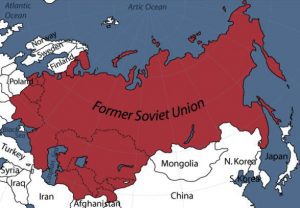 Reagan Doctrine, he warned the nations of the world against what he saw as the dangerous trend of tolerating the Soviets build-up of nuclear weapons and attempts to infiltrate Third World countries in order to spread communism. President Reagan’s policy was basically peace through strength. We had to make the Soviets understand that we would never compromise our principles and standards, nor ignore the facts of history and the aggressive impulses of an evil empire. To do so would mean abandoning the struggle between right and wrong and good and evil, and he knew that must never happen. I think we, the nations of the world, have seen just how detrimental a weak security stance can be given the current mess we are digging out of.
Reagan Doctrine, he warned the nations of the world against what he saw as the dangerous trend of tolerating the Soviets build-up of nuclear weapons and attempts to infiltrate Third World countries in order to spread communism. President Reagan’s policy was basically peace through strength. We had to make the Soviets understand that we would never compromise our principles and standards, nor ignore the facts of history and the aggressive impulses of an evil empire. To do so would mean abandoning the struggle between right and wrong and good and evil, and he knew that must never happen. I think we, the nations of the world, have seen just how detrimental a weak security stance can be given the current mess we are digging out of.
Reagan proposed a policy that went beyond the Truman Doctrine of containment, urging active intervention. His plan was to increase United States military spending and, if necessary, to use force to roll back communist expansion in Third World nations. His administration provided military aid to Nicaraguan groups fighting the leftist Sandinista government and gave material support to the Afghan mujahedeen in their ongoing war against Soviets. At the same time, he reassured Americans that he would pursue an understanding with totalitarian powers and cited the United States’ effort to limit missile development as a step toward peace. Reagan’s doctrine came at the same time as a surge in international and domestic protests against the United States-Soviet arms 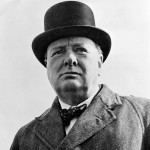 race. His opponents blamed the administration for causing the largest increase in American military spending since the beginning of the Cold War, a policy that swelled the nation’s budget deficit. I suppose that those who just look at the money, might think this was a bad thing, but in the late 1980s the Soviet Union collapsed, ending decades of communist rule in Russia and Eastern Europe. There were those who believed that it had collapsed under the weight of its own bloated defense spending and a protracted war in Afghanistan, but Reagan and his supporters credited his hard-line anti-communist policies for defeating Soviet communism. I am inclined to agree with President Reagan, because I have never believed that we can appease our way to peace and safety in this world.
race. His opponents blamed the administration for causing the largest increase in American military spending since the beginning of the Cold War, a policy that swelled the nation’s budget deficit. I suppose that those who just look at the money, might think this was a bad thing, but in the late 1980s the Soviet Union collapsed, ending decades of communist rule in Russia and Eastern Europe. There were those who believed that it had collapsed under the weight of its own bloated defense spending and a protracted war in Afghanistan, but Reagan and his supporters credited his hard-line anti-communist policies for defeating Soviet communism. I am inclined to agree with President Reagan, because I have never believed that we can appease our way to peace and safety in this world.

